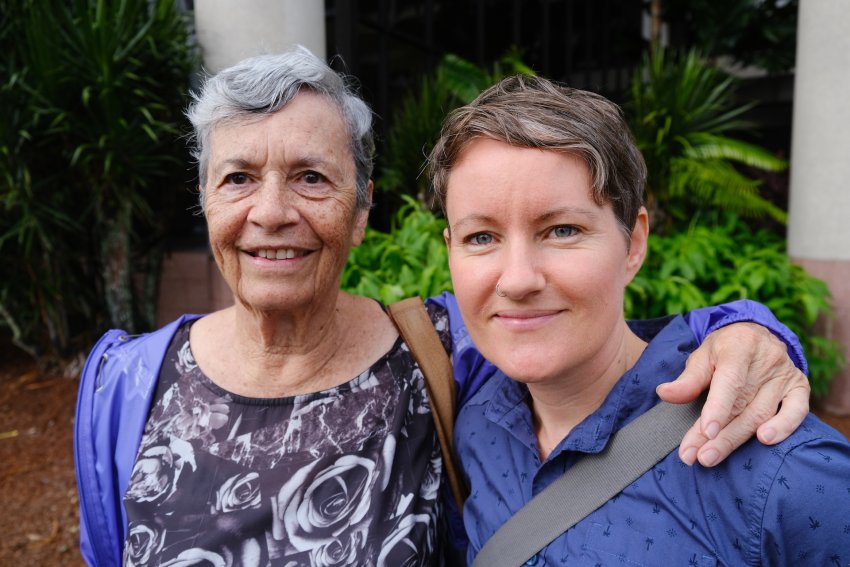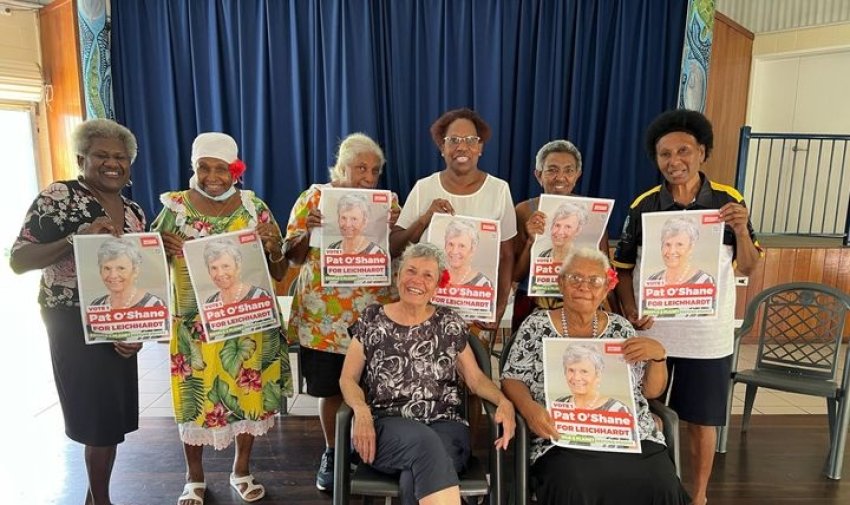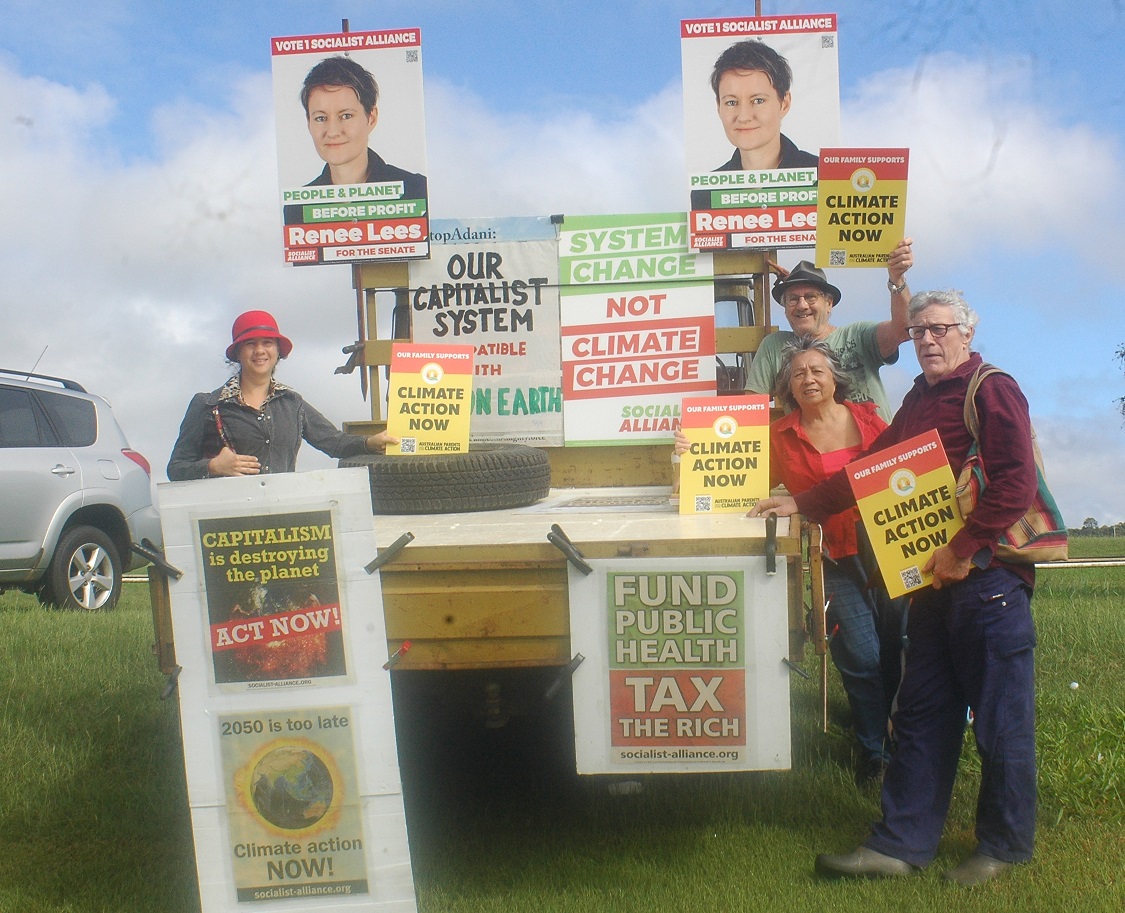
Thought by some to be a land of rednecks, Far North Queensland may not appear to be an obvious place for a socialist election campaign.
Its electorates of Leichhardt and Kennedy, which cover an area almost the size of New South Wales, have long been strongholds of Warren Entsch (Liberal National Party) and Bob Katter.
But Socialist Alliance’s (SA) Far North Queensland branch took up the challenge. This was its first time running candidates: Renee Lees at the head of the party’s Senate ticket and Pat O’Shane for Leichhardt.
Lees told Green Left the results were encouraging. “Our goals were to reach out well beyond our networks, to build the local movements for social justice, First Nations justice and climate, and to grow our members and allies. We did all that.”
Lees, a community lawyer, is active in campaigns for the climate and LGBTIQ rights, among other justice issues.
Lees was SA’s regional spokesperson as the branch focused on contributing to joining the new members needed after last year’s electoral registration changes required parties to have 1500 members.
Pat O’Shane had recently returned to Cairns where, in the 1960s, she had been Queensland’s first female Aboriginal teacher. In between, she had a distinguished legal career in NSW as the first First Nations barrister and magistrate in the country.
O’Shane had never tried to win friends in the halls of power, but to deliver real justice. She repeatedly questioned police actions, pioneered restorative justice for young people and upheld free speech.
O’Shane joined and the branch pre-selected her last December to contest the seat of Leichhardt.
O’Shane told Green Left: “I prioritised climate action because it is the existential issue. People in the Torres Strait know this because they have been experiencing rising sea levels for years now. Other communities have been suffering many severe weather patterns causing floods and fires.”
O’Shane also campaigned on social justice issues. “For Indigenous peoples in the electorate of Leichhardt those are: inadequate overcrowded housing which results in poor health and family violence and a lack of health facilities — all factors which have multiplier effects.
“Further, as an Indigenous person, I believe that it is my duty to represent to our people an alternative to the usual line-up of candidates in an election such as E22.”
zenadthkes_jill_hickson.jpg

SA’s membership in Far North Queensland grew tenfold through the campaign, and members’ and supporters’ activity rose dramatically.
More than 80 volunteers across Cairns, the Atherton Tablelands, Mossman, Port Douglas and the Torres Strait took active roles in shaping SA’s campaign, including some key organisers brand new to the party.
For O’Shane, travelling to the Torres Strait was very important. “I prioritised the Indigenous communities because our people are the most neglected people in the Australian community. Apart from the racism experienced, they all suffer the tyranny of distance, thus, they are ‘out of sight, and out of mind’.”
O’Shane met community members on five islands in March, including a group of former students who were supporting her. Their work secured votes of up to 39% in a number of booths in that region, including communities at the tip of Cape York Peninsula.
Support from O’Shane’s family and friends assisted the campaign’s reach into Cape York First Nations communities, where SA votes varied from 8% to 17%, and among the large number of First Nations peoples who live in Cairns and Mossman.
Meanwhile, GetUp! had been working to empower First Nations voters by helping them enrol and reducing informal votes.
The first preference vote for O’Shane across Leichhardt was 4.07%. This was despite a record field of 11 candidates. The Greens again received 10%, ensuring the overall progressive vote expanded while the far-right vote declined.
tolga_markets_1st_may_alan_isherwood.jpg

In the Cairns region 10 booths returned a first preference for SA of more than 4% and up to 9% concentrated in Cairns’ inner and western suburbs. Further north, in O’Shane’s traditional country around Mossman and the Daintree, two more booths recorded a vote above 6%.
Despite O’Shane’s impressive record in public office, the establishment media opted for bare minimum coverage. The campaign was very much a people-powered effort, which relied on public events, social media, stalls, activating networks and letter-boxing to get the word out.
The Senate first preference vote for SA in Leichhardt was 1.5%; up to 3% in Cairns booths; and as much as 8% in Torres Strait.
The communities of Doomadgee, Mornington Island and Yarrabah in Kennedy recorded votes of up to 5% and campaigners in the southern Tablelands pulled together a vote of nearly 1%.
The statewide result for the Senate ticket was just over 10,000 votes — a respectable 0.34%.
This election campaign has proven that no place is an unlikely place for progressive change. SA in the Far North is now poised to organise for social change on a scale well beyond its previous achievements.